English, Word for Word
Introducing Word for Word! A Brand New Phonics Scheme!
Having spent the last few years working in various educational support roles (Resource Teacher, SENCo, Specialist Literacy Teacher), I have encountered countless children who struggle to read, affecting their self-confidence, motivation, and ability to access the curriculum. The feelings of shame and inadequacy that accompany reading difficulties can later manifest as anxiety and depression.
Why are so many Children Falling Behind?
Some children have an underlying difficulty, e.g., weaknesses in phonological awareness, placing them at risk of reading impairment; however, for far too many, the issue is not some underlying difficulty but the fact that they have not been properly taught to read. The science of reading instruction is not well understood by many educators and many sub-par practices abound.
Dr. Louisa Moats
Some children are lucky; they have parents who can afford to invest in extra tuition and they receive the support they need. Countless others are not so fortunate. Without intervention, the gaps widen and, eventually, catch up becomes impossible.
With this is mind, I created Word for Word, and it seems most fitting to launch this on World Children’s Day, 2019 – a day when we promote children’s welfare and rights.

What is Word for Word?
Word for Word is an explicit, systematic, synthetic phonics programme. It can be used by parents and teachers to teach and embed the early phonics knowledge on which reading success is built.
Synthetic phonics focuses on the link between graphemes (letters) and phonemes (sounds). Children are taught the phonemes of English in a sequenced way, learning how to blend and segment them to construct and deconstruct words. Word for Word features a series of sequenced decoding and encoding sheets, supporting pupils to read and spell in a systematic way.
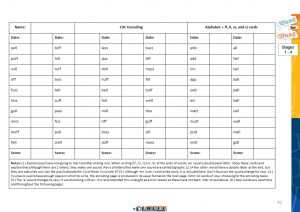
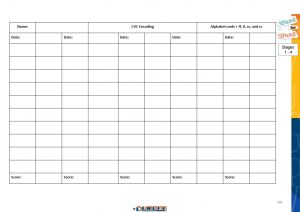
As they progress through the Word for Word programme, children learn there can be more than one way of representing some sounds, e.g., /ai/ can be represented by a, ay, a_e/ae, ea, ei, et, ey, eigh, and aigh. In this way, Word for Word lays the foundations for successful orthographic mapping.
Word for Word contains numerous suggestions for activities to build phonological awareness and vocabulary. The book is packed with supplementary activities such that pupils can apply what they have learned and further consolidate it.
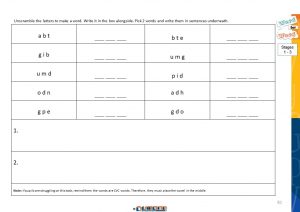
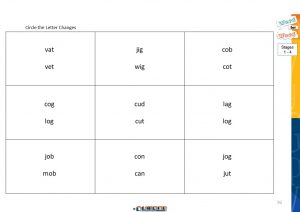
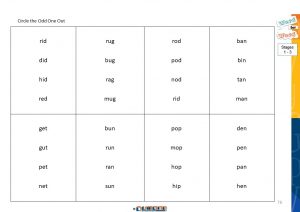

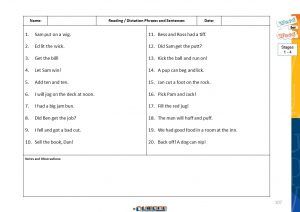
Who is Word for Word for?
Word for Word is suitable for use with children who are just being introduced to phonics. It may also be used as an intervention programme with older children for whom knowledge gaps have been identified. Word for Word may be used by parents who wish to support their own children at home, by teachers in whole-class, small group or 1:1 contexts, and by literacy tutors supporting pupils to develop their knowledge of phonics. Word for Word is also suitable for use as a structured spelling scheme.
How do I Implement Word for Word?
The Word for Word programme begins by introducing pupils to a series of phonemes, using a set of grapheme cards provided. Children must be able to say the sound when shown the card, point to the correct card upon hearing the sound, and write the correct grapheme when a phoneme is called out. Once the first 6 sounds are taught, pupils are introduced to blending at CV (consonant-vowel) and VC (vowel-consonant) levels. Thereafter, CVC decoding and encoding is introduced.
Once pupils have reached this level, they can be introduced to some of the supplementary decoding and encoding tasks contained in the book. These provide scope for pupils to use and apply their learning. At this juncture, dictation sentences are introduced, supporting the development of listening skills and further embedding encoding and writing skills. A comprehensive section on the development of fine motor skills is included to prepare children for such writing tasks.
Word for Word is a flexible programme. Teachers and parents are advised to use their judgement in relation to the amount of content covered in each lesson and the pace of lessons. Pupils do not need to complete every activity in the book if they have demonstrated mastery on a particular task. That said, regular retrieval practice is recommended, such that learning is assured (and not confused with successful performance on a particular day). Blank document templates are provided such that review pages, targeting identified areas of weakness, can be created if necessary. In this way, Word for Word can be personalised to each child’s needs.
How does Word for Word Support Reading?
Decoding skills alone are insufficient for reading success. Language comprehension is crucial also (see Gough and Tumner’s (1986) Simple View of Reading). Implemented correctly, Word for Word supports the word recognition component (phonological awareness, decoding, and sight recognition of common words) and the vocabulary strand of the language comprehension component depicted in Scarborough’s (2001) Reading Rope. As such, Word for Word provides an excellent foundation for literacy success, but it is not sufficient on its own. The use of decodable readers to enable children to further apply their learning is recommended. Pupils should also be exposed to rich literature; exposure to a wide range of stories from a variety of genres is vital.
Interested in Learning More?
Attached to today’s post is a free download containing samples of the activities contained in Word for Word Stage 1 – 4. Included in the download is an introduction explaining the scope and sequence of stages 1 – 4 and outlining the rules and patterns introduced to pupils. Word for Word Stages 1 – 4 introduces the following phonemes and graphemes.
|
Stage 1 |
a, e, i, s, m , n |
|
Stage 2 |
p, t |
|
Stage 3 |
o, u, b, d, f, g, h, r |
|
Stage 4 |
l, v, c, k, ck, w, j z oo/oo |
Readers are encouraged to download the sample to learn more about Word for Word. Over the coming days and weeks, the next stages of Word for Word, building on these foundation stages, will be released. Keep an eye on our website for further details!
Why Should I Invest in Word for Word?
To summarise, Word for Word Stages 1 – 4 book contains:
- A comprehensive introduction explaining the Word for Word programme and how to successfully deliver it;
- Hints, notes, and teaching tips throughout;
- Suggestions for a range of activities to promote phonological awareness;
- Vocabulary development ideas;
- A comprehensive fine motor skills activities guide;
- 22 decoding and 22 corresponding encoding pages;
- 53 pages of supplementary activities, including Read and Draw, Letter Change, Circle the Odd One Out, Unscramble the Jumbled Letters, and Sentence Reading an Dictation pages;
- All the grapheme cards and flashcards required to implement the programme;
- Summative assessment pages;
- Blank document templates to be used to create your own targeted activities to address identified areas of weakness;
- All of this at an affordable price!
Download your FREE SAMPLE today!
Purchase Word for Word Stages 1 – 4 here!
